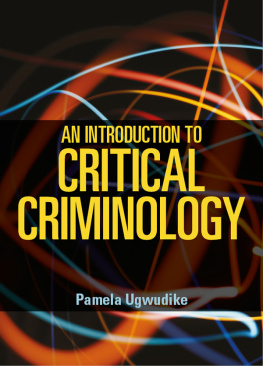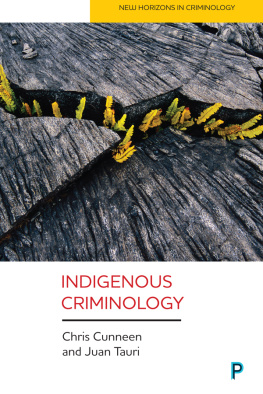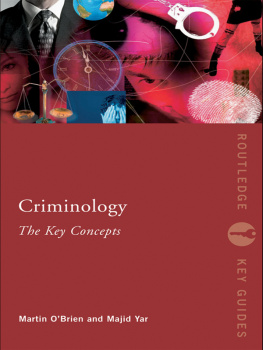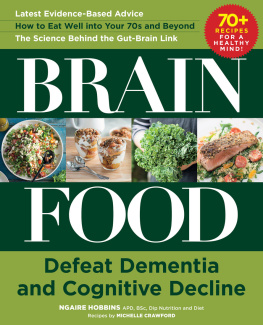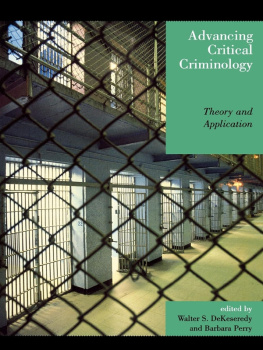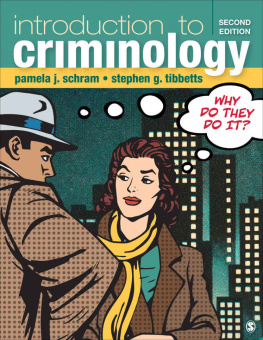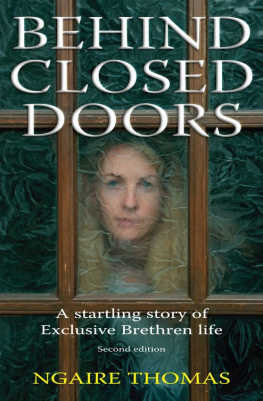NGAIRE NAFFINE - Feminism and Criminology
Here you can read online NGAIRE NAFFINE - Feminism and Criminology full text of the book (entire story) in english for free. Download pdf and epub, get meaning, cover and reviews about this ebook. year: 1996, publisher: Polity Press, genre: Science. Description of the work, (preface) as well as reviews are available. Best literature library LitArk.com created for fans of good reading and offers a wide selection of genres:
Romance novel
Science fiction
Adventure
Detective
Science
History
Home and family
Prose
Art
Politics
Computer
Non-fiction
Religion
Business
Children
Humor
Choose a favorite category and find really read worthwhile books. Enjoy immersion in the world of imagination, feel the emotions of the characters or learn something new for yourself, make an fascinating discovery.
- Book:Feminism and Criminology
- Author:
- Publisher:Polity Press
- Genre:
- Year:1996
- Rating:3 / 5
- Favourites:Add to favourites
- Your mark:
- 60
- 1
- 2
- 3
- 4
- 5
Feminism and Criminology: summary, description and annotation
We offer to read an annotation, description, summary or preface (depends on what the author of the book "Feminism and Criminology" wrote himself). If you haven't found the necessary information about the book — write in the comments, we will try to find it.
Feminism and Criminology — read online for free the complete book (whole text) full work
Below is the text of the book, divided by pages. System saving the place of the last page read, allows you to conveniently read the book "Feminism and Criminology" online for free, without having to search again every time where you left off. Put a bookmark, and you can go to the page where you finished reading at any time.
Font size:
Interval:
Bookmark:
for my sisters,
Frances Butterfield and Maxine Cape
FEMINISM
AND
CRIMINOLOGY
Ngaire Naffine
Polity Press
Copyright Ngaire Naffine 1997
The right of Ngaire Naffine to be identified as author of this work has been asserted in accordance with the Copyright, Designs and Patents Act 1988.
First published in 1997 by Polity Press
in association with Blackwell Publishers Ltd.
Reprinted 2006, 2007
Polity Press
65 Bridge Street
Cambridge CB2 1UR, UK
Polity Press
350 Main Street
Malden, MA 02148, USA
All rights reserved. Except for the quotation of short passages for the purposes of criticism and review, no part of this publication may be reproduced, stored in a retrieval system, or transmitted, in any form or by any means, electronic, mechanical, photocopying, recording or otherwise, without the prior permission of the publisher.
Except in the United States of America, this book is sold subject to the condition that it shall not, by way of trade or otherwise, be lent, re-sold, hired out, or otherwise circulated without the publishers prior consent in any form of binding or cover other than that in which it is published and without a similar condition including this condition being imposed on the subsequent purchaser.
ISBN: 978-0-7456-8329-4
ISBN: 978-0-7456-1164-8 (pbk)
A CIP catalogue record for this book is available from the British Library.
Typeset in 10 on 12pt Palatino
by Graphicraft Typesetters Ltd., Hong Kong
Printed and bound in Great Britain by Marston Book Services Limited, Oxford
This book is printed on acid-free paper.
For further information on Polity, visit our website: www.polity.co.uk


I have incurred debts during the writing of this book. My creditors include Peter Goodrich and my friends at Birkbeck College, University of London, who provided good company and intellectual stimulation during my stay at Birkbeck in 1994, when I was writing the book. In particular, I thank my friend Matthew Weait for his thoughtful comments on the introduction. Alison Young, Peter Rush and Richard Collier all provided valuable advice on various versions of the text. Kathy Laster was tireless in her reading of drafts and gave me many detailed and creative comments. Margaret Davies helped as usual, with her clarity and logic. Wai-Quen Chan provided splendid literary assistance. Eric Richards encouraged me all the way, as he always does. I thank Dartmouth Publishing Company for permission to use parts of the introduction to my edited volume, Gender, Crime and Feminism. I am also grateful to the Melbourne University Law Review for permission to use in parts of Possession: Erotic Love in the Law of Rape. Finally I thank Laura Grenfell, Peter Romaniuk and Emma Shaw for their assistance at the final stages.

It is tempting to begin a book on feminism and criminology with a statement about the neglect of both women and feminism by the discipline. Certainly, a quick scan of the criminology section of any American or British library will turn up many standard student texts in which women and feminism play but a minor role. This exercise will confirm that criminology is still a discipline dominated by men, and that its subject matter is also male-dominated. Criminology, it seems, is mainly about academic men studying criminal men and, at best, it would appear that women represent only a specialism, not the standard fare.
Similarly, feminism as a substantial body of social, political and philosophical thought (indeed the subject of this book), does not feature prominently in conventional criminological writing. When feminism is formally allocated a place in a textbook, it is often to be found within the womens chapter, which is the chapter invariably on women as offenders and as the victims of crime. This is necessarily a constricted use of feminism. Alternatively, feminism is slotted into a chapter entitled Gender and Crime, which should deal at least with the implications of masculinity and femininity for the criminality of both sexes, but is often simply another, and misleading, way of designating the now compulsory chapter on women. Thus, feminism is either reduced to, or conflated with, the study of women and crime, implicitly a minor branch of the discipline of criminology. Feminism in its more ambitious and influential mode is not employed in the study of men, which is the central business of criminology. The potential of feminist analyses in criminology at large is, therefore, widely misunderstood and underestimated. The message to the reader is that feminism is about women, while criminology is about men.
A clear illustration of this interesting logic is to be found in the Oxford Handbook of Criminology, a weighty volume (1259 pages) intended to present students with a comprehensive account of the current state of the discipline. There is no equivalent chapter on men.
By setting up the intellectual task as they do, the editors of the Oxford book are tacitly asking us to think of criminology as a discipline that is somehow free from the effects of gender when it is in its proper form. Gender is treated as a specialist topic (rather than integral to the analysis of crime), and then we discover that this specialism of gender actually refers to the study of women. In a few easy steps, the editors have established a standard case and an exception or speciality. The standard case is the study of men as non-gendered subjects and the speciality is the study of women as gendered beings. As Jonathon Culler has pointed out, this procedure of comparing a deviant with a standard case is generally assumed to be the appropriate one in any serious analysis, whatever the discipline. It is not peculiar to criminology. The method is to describe the simple, normal standard case of [whatever the topic], illustrating its essential nature, and proceeding from there to discuss other cases that can be defined as complications, derivations, and deteriorations.
The editors of the Oxford book perform precisely this manoeuvre. Gender, which predictably turns out to mean women, is treated as a specialism that can come late in the book. The main part of the volume, which is essentially about men (but not as sexed men and therefore not explicitly so), then appears as the natural heartland of criminology, its proper terrain. In criminology, as in other disciplines, it is men, not women, who supply the essential (and therefore unexamined) standard case. Men, themselves, are not compared with others to see what makes them specific and different.
American criminology texts employ a similar logic. In 1991, Stephen E. Brown, Finn-Aage Esbensen and Gilbert Geis published one of the many standard introductory textbooks of criminology tailored for the American student market. Criminology: Explaining Crime and its Context is some 730 pages long and divided into three parts: foundations of criminology, which introduces the subjects of criminology, criminal justice and crime statistics; theories of crime, which traverses the usual range of theories of crime; and types of crime. Women appear in the third section on criminal types. The reason that female crime enters the book this late in the day, well after the general chapters on theoretical criminology, is because theories of crime and delinquency until now largely have failed to incorporate gender variables.
Font size:
Interval:
Bookmark:
Similar books «Feminism and Criminology»
Look at similar books to Feminism and Criminology. We have selected literature similar in name and meaning in the hope of providing readers with more options to find new, interesting, not yet read works.
Discussion, reviews of the book Feminism and Criminology and just readers' own opinions. Leave your comments, write what you think about the work, its meaning or the main characters. Specify what exactly you liked and what you didn't like, and why you think so.



